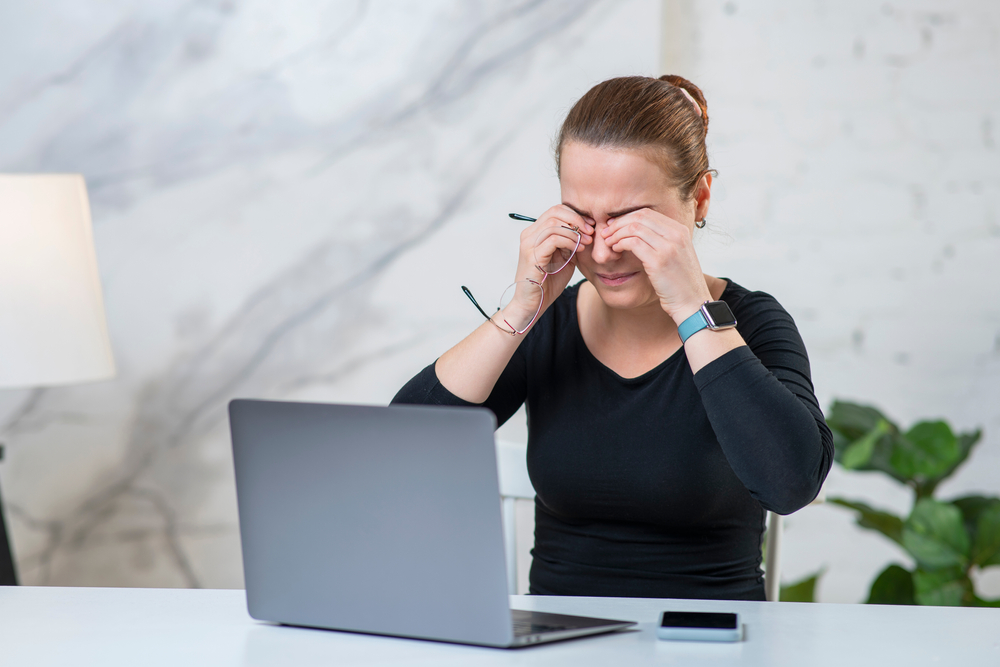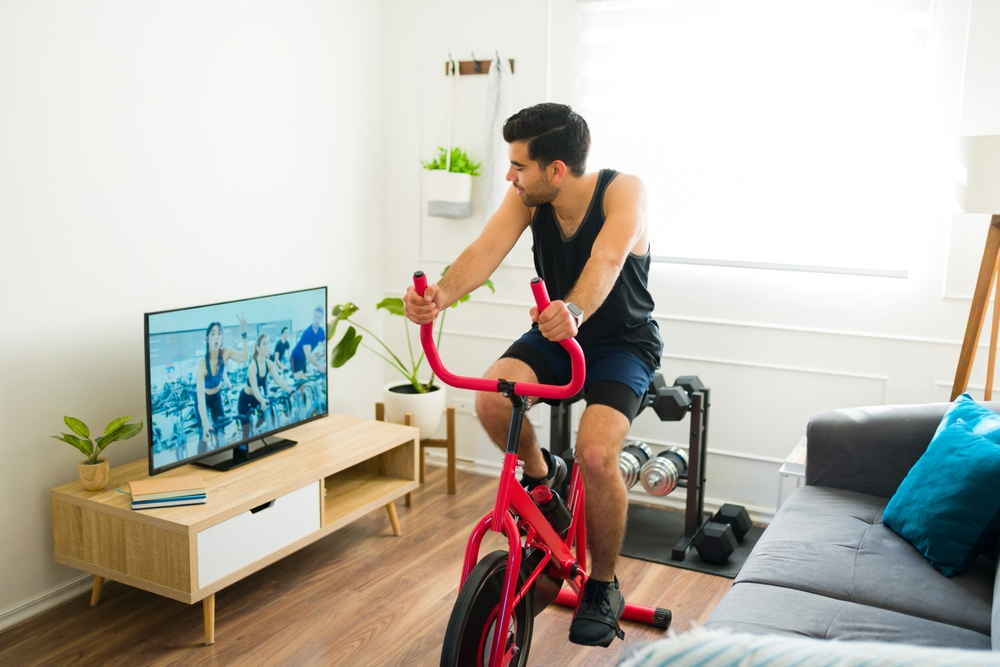In our digitally dominated society, it has quickly become the norm to spend much of our precious free time glued to screens, whether it’s smartphones, TVs, computers, tablets, e-readers or gaming consoles. While these devices help us do our work, and connect, inform and entertain us, too much recreational screen time can take a toll on our physical and mental health.
How much screen time is too much for adults?
The Canadian 24-Hour Movement Guidelines recommend that adults aim for no more than three hours of recreational screen time daily. But only 57% of adults meet this target.
How does screen time affect your health?
Overindulging in screen time is linked to many health issues, including:
- Eye strain
- Headaches
- Tech or text neck
- Heart disease risk factors like high blood pressure, obesity, low HDL (“good”) cholesterol and insulin resistance
- Poor stress regulation
- Depression: one study found that adults who spent more than six hours a day watching TV or using computers were more likely to develop symptoms of depression. Another study found that adults with depressive symptoms who reduced their social media use to just 30 minutes a day for three weeks experienced significant declines in symptoms of depression.
- Reduced physical activity levels and increased sedentary behaviours, both negatively affecting your overall health.

How screens’ blue light affects your sleep
Using screens can even disrupt your sleep because the blue light that screens emit can lower your body’s production of melatonin – a hormone that helps you fall and stay asleep. In fact, using screens within one hour of bedtime can hinder your ability to fall asleep and reduce sleep time and quality.
Why trade screen time for active time?
- A 2020 study conducted during the pandemic found that adults who limited their screen time and exercised outdoors reported greater boosts to their physical and mental health than those who increased their screen time or didn’t get active outside.
- Another study showed that trading just 30 minutes of screen time for 30 minutes of exercise daily had participants feeling happier in just two weeks.
6 tips for swapping screen time with active time
1. Set clear screen time goals
First, figure out how much of your free time you currently spend on screens – many smartphones offer this information. Then, set a daily screen time goal (hint: the 24-Hour Movement Guidelines suggest that adults cap leisure screen time to three hours a day).
2. Enjoy entertainment on the move
Rather than binge-watching or mindlessly scrolling, listen to audiobooks, podcasts, music or your favourite radio station while walking, wheeling, jogging, cycling or tackling household chores. That way, you’ll still get your entertainment fix while reaping the many benefits of getting active.

3. Turn idle moments into active ones
When we’re on public transit, in line or waiting for elevators, it’s become accepted to pull out our smartphones to fill in those moments. Why not transform those moments into active ones? Consider stretching, marching in place, pacing or doing bodyweight exercises. You may raise some eyebrows, but just remember that you’re the one making the healthier choice. Plus, chances are that other people won’t even notice because they’ll be looking down at their smartphones!
4. Bond over movement instead of screens
After a long day of work, school, errands and/or household chores, many of us like to unwind and connect with our friends and families by watching TV shows or movies together. Trade those rituals for active bonding sessions by walking, wheeling, jogging, cycling or playing sports together instead. Not only will you get to actively connect, but you’ll also avoid arguments over what to watch!

5. Sleep tight – don’t let the screens bite!
Many of us are guilty of using screens before bedtime even though this behaviour can disrupt our sleep. Replace all that scrolling, swiping and streaming with stretches or yoga to help you unwind and sleep more soundly.
6. Combine screen time with active time
Sometimes you may not have enough time or energy to scroll, swipe, stream and get active, especially if you’re exhausted from working all day. So why not combine them? It’s still better to get active in front of a screen than not at all. You could use a treadmill or stationary bike while watching or streaming a TV show or follow along with online workout videos.

By trading recreational screen time for active time, you’re taking an important step towards improving your health and well-being. Given how widely accepted screen use has become, it might take some effort, but the rewards are worth it. Screens aren’t going anywhere, so we need to find healthier and more responsible ways to interact with them. Strike a healthy balance and start swapping today – leave scrolling, swiping and streaming behind for moving your way to a healthier you!








